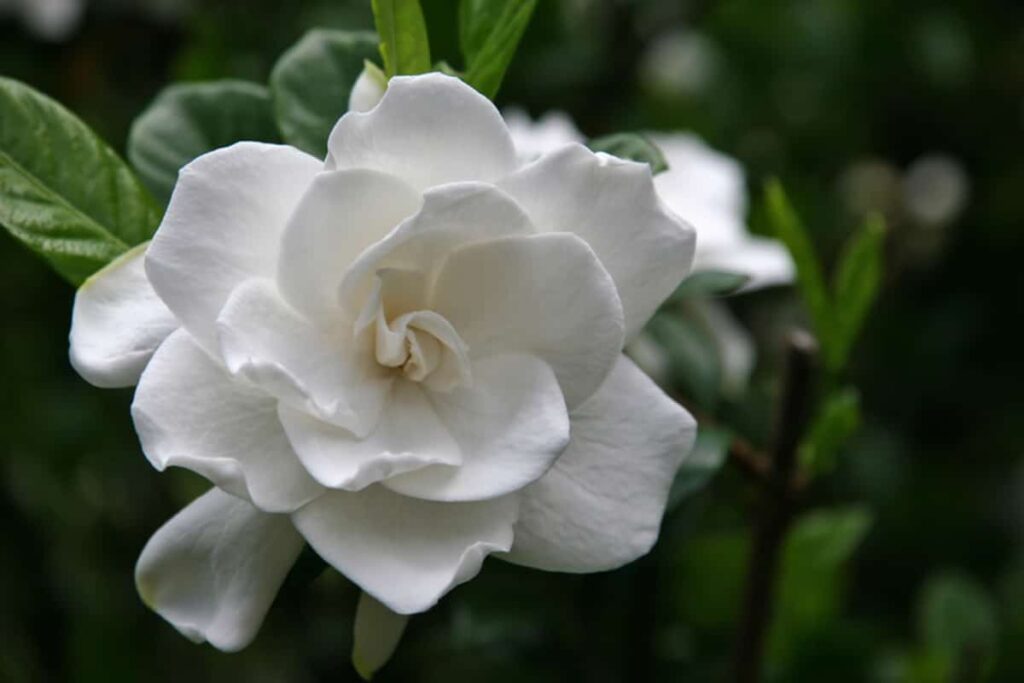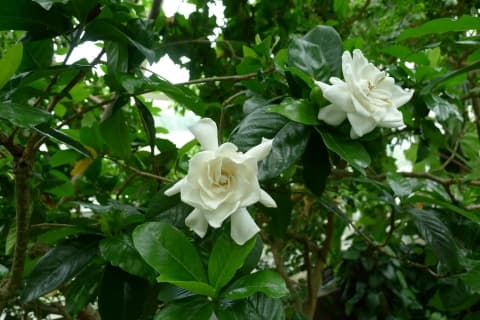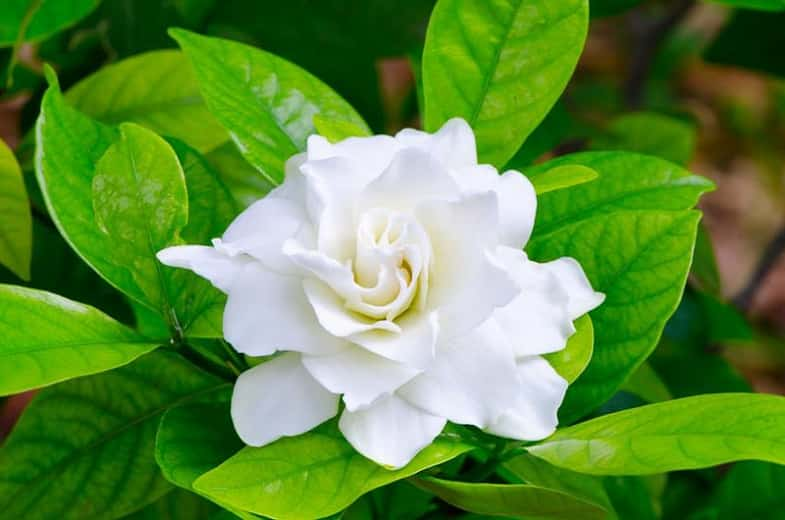Gardenia Jasminoides (Cape Jasmine): How to Care?
What do we know about Gardenia Jasminoides, one of the most popular potted flowers with its scent and beautiful appearance?
Another name of the plant is “Cape Jasmine”.
You may need this article to learn more about the diseases and care of this flower that surrounds our home with its beautiful scent.
Gardenia flower, a plant native to various Asian and Pacific islands such as China and Japan, belongs to the Rubiaceae family, which has dark green leaves.
Today, the flowers and fruits of this flower are used in different fields.
It is not only used as an ornamental plant, but also as a plant species used in aromatherapy and herbal medicine industry.

What Will We Learn?
Gardenia Flower Properties
The gardenia plant, which is 4 to 8 feet tall, has about 250 species in nature.
The most important of these is Gardenia Jasminoides, which is fragrant and has white flowers.
Gardenia usually blooms in spring and fall, but can bloom in summer if the temperature is right.
In winter, the place where it is located should be at least 15 degrees.
Care should be taken as very cold and hot weather can damage the plant.
This type of weather adversely affects the leaves and flowers of the flower, which may cause the flower buds to fall.
The gardenia plant, which is easily affected by air currents, should be especially protected.
Sun is very important for Gardenia Jasminoides.
The morning sun is like a reward for this plant.
But that doesn’t mean he wants scorching heat.
It should be in an area that does not receive full sunlight and can receive indirect light.
You can take your Gardenia Jasminoides sunbathing in the afternoon to another place.
It can be rested by being away from the sun during periods of extreme heat.
If the shading period is too long, the flowering will be less.
For this reason, if you are considering growing this plant, be sure to choose a very sunny and hot time of the year.
During the rest period, watering should also be reduced.
Night temperature is also important for Gardenia Jasminoides.
If the temperature drops, the plant may become deficient in iron, and this leads to yellowing of the leaves.
If the night temperature is too high, the buds of the flower may drop.
In order to control the temperature values of the Gardenia Jasminoides, you can put a thermometer in the room where it is grown.
Since gardenia is a tropical plant, it likes high humidity.
It can be grown in areas with humidity between 75 and 80%.

Gardenia Jasminoides Flower Care
The soil in which the Gardenia Jasminoides will be planted should have a quick-drying feature.
Make sure you use acidic soil and that soil is well-drained.
Fertilized and drained soils will be a good idea for your plant.
Better quality flowers and a healthy plant can be obtained with a good fertilization.
Compost supplement can be made regularly 2 times a month during the 6-month period between spring and autumn, that is, between April and October.
It requires irrigation in all seasons.
Irrigation should be done in such a way that it can reach every part of the soil of the plant and should be increased in summer.
You should be careful that the gardenia plant does not leave water on the pot plate.
Otherwise, the probability of damage to the roots of the plant increases.
During irrigation, the leaves can be sprayed with water during the hot months.
It is recommended to use lime-free water when watering the Gardenia plant.
Common diseases to the gardenia plant are chlorosis, bud shedding, bacterial leaf spot and powdery mildew.
As a result of these diseases, nematodes, red spiders, aphids and whiteflies can be seen on your plant.
How To Reproduce A Gardenia Jasminoides Plant?
It should be stored at room temperature (21-24 degrees), covered with a glass or nylon cover.
Rooting will take place in 1 or 1 and a half months. However, this is not the only method.
Gardenia can also be propagated by root division.
How To Change The Flower Pot?
First, moisten the soil of the Gardenia Jasminoides you want to pot in the new pot.
Grasp the root collar of the plant with one hand and turn the pot upside down.
Remove the roots from the pot without damaging them and plant your flower in the new pot.
Check the bottom of the pot before you start planting in the new pot.
Do not choose a flower pot without a drainage hole. Do not forget to irrigate after planting.
The basic steps to be considered during gardenia repotting are listed below:
- Wait for the flower to become suitable for repotting.
- Get the most suitable pot for your plant. The existing pot should be 1-2 sizes larger. Check the drainage holes of the flower pot you have chosen, if they are missing or small, open the holes and widen them.
- Before repotting, water your plant lightly and wait for the soil to soften.
- Pull the plant out of the pot by grasping the root head with one hand and two fingers as far as possible.
- Make sure the roots are fully embedded in the soil.

How To Prevent The Leaves Of Gardenia From Falling?
If the leaves of your gardenia plant are turning yellow and falling, there may be several reasons.
You should understand the reason why the plant is damaged and take a precaution against it.
The damage to the leaves of the Gardenia Jasminoides can often be based on watering, potting, airflow and temperature.
If you do not reduce watering in winter or give more water than necessary, you can damage the leaves of the gardenia plant.
This can occur even if the soil is too dry.
If the roots are damaged after the pot change, the plant cannot get enough air due to the narrowness of the pot.
This can result in the plant being exposed to airflow.
Leaves of your plant may be damaged if left at a temperature below 15 degrees Celsius during the winter.
In order for your plant leaves to return to their original state, you must first cut these leaves and then identify the wrong care and produce a solution accordingly.
If you want to know the benefits of Gordolobo Tea, you can also read this article.
Sources:
- Gardenia
https://en.wikipedia.org/wiki/Gardenia - What Is A Gardenia Flower And How Is It Care? Gardenia Flower Meaning, Features, Benefits and Cultivation
https://www.hurriyet.com.tr/mahmure/gardenya-cicegi-nedir-ve-bakimi-nasildir-gardenya-cicegi-anlami-ozellikleri-faydalari-ve-yetistiriciligi-41800798
